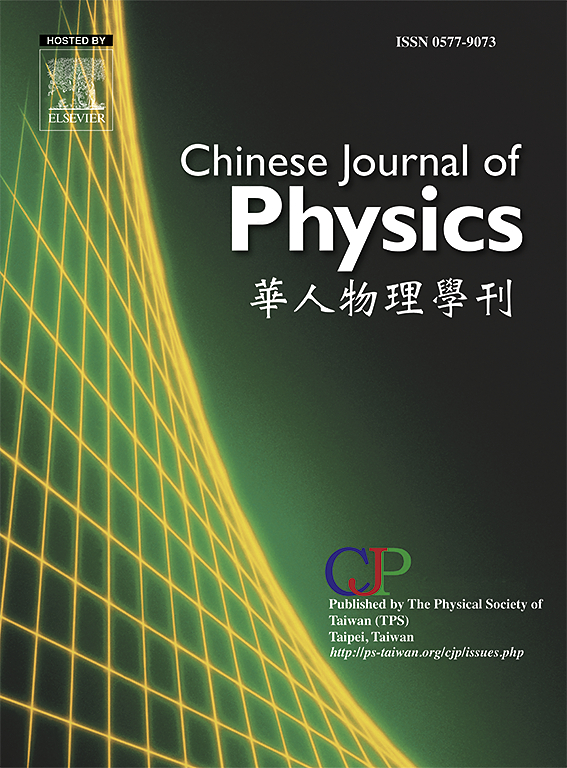Magnetic structure of ternary intermetallic Tb3Co4Sn13 with nonchiral crystal structure
IF 4.6
2区 物理与天体物理
Q1 PHYSICS, MULTIDISCIPLINARY
引用次数: 0
Abstract
Single crystals of the ternary stannide Tb3Co4Sn13 were synthesized using the tin self-flux method. This article reports the results of magnetic susceptibility, specific heat, and neutron diffraction studies. The title compound undergoes a structural phase transition at TD of 89.4 K and a magnetic ordering temperature TN of 11.3 K. The crystal structure transitions from a high-temperature Pm-3n structure to a rhombohedral R-3c structure, and this transition is accompanied by an increase in unit cell volume at TD. Tb3+ is the only magnetic species in the compound, with spins entering long-range magnetic order states below TN. The magnetic space group is R-3′c (#167.105), the maximal subgroup of the proposed R-3c structure. Also investigated was the isostructural Nd3Co4Sn13. The same R-3c model fits the low-temperature structure of Nd3Co4Sn13, and the magnetic space group is identified as R-3′c' (#167.106), consistent with the structure reported in the authors’ previous study.

求助全文
约1分钟内获得全文
求助全文
来源期刊

Chinese Journal of Physics
物理-物理:综合
CiteScore
8.50
自引率
10.00%
发文量
361
审稿时长
44 days
期刊介绍:
The Chinese Journal of Physics publishes important advances in various branches in physics, including statistical and biophysical physics, condensed matter physics, atomic/molecular physics, optics, particle physics and nuclear physics.
The editors welcome manuscripts on:
-General Physics: Statistical and Quantum Mechanics, etc.-
Gravitation and Astrophysics-
Elementary Particles and Fields-
Nuclear Physics-
Atomic, Molecular, and Optical Physics-
Quantum Information and Quantum Computation-
Fluid Dynamics, Nonlinear Dynamics, Chaos, and Complex Networks-
Plasma and Beam Physics-
Condensed Matter: Structure, etc.-
Condensed Matter: Electronic Properties, etc.-
Polymer, Soft Matter, Biological, and Interdisciplinary Physics.
CJP publishes regular research papers, feature articles and review papers.
 求助内容:
求助内容: 应助结果提醒方式:
应助结果提醒方式:


